
Light and airy flowers, which I fondly call ‘bobbers,’ are one of the key components of a naturalistic garden.
Despite their varying shapes (balls, umbels, spires, etc.), a common factor of these bobbers is their tall, thin stems that gracefully weave through and appear to ‘float’ above other plants.
Their presence not only adds a touch of elegance to the garden, but helps to create a full, densely planted garden (another hallmark of the naturalistic style).
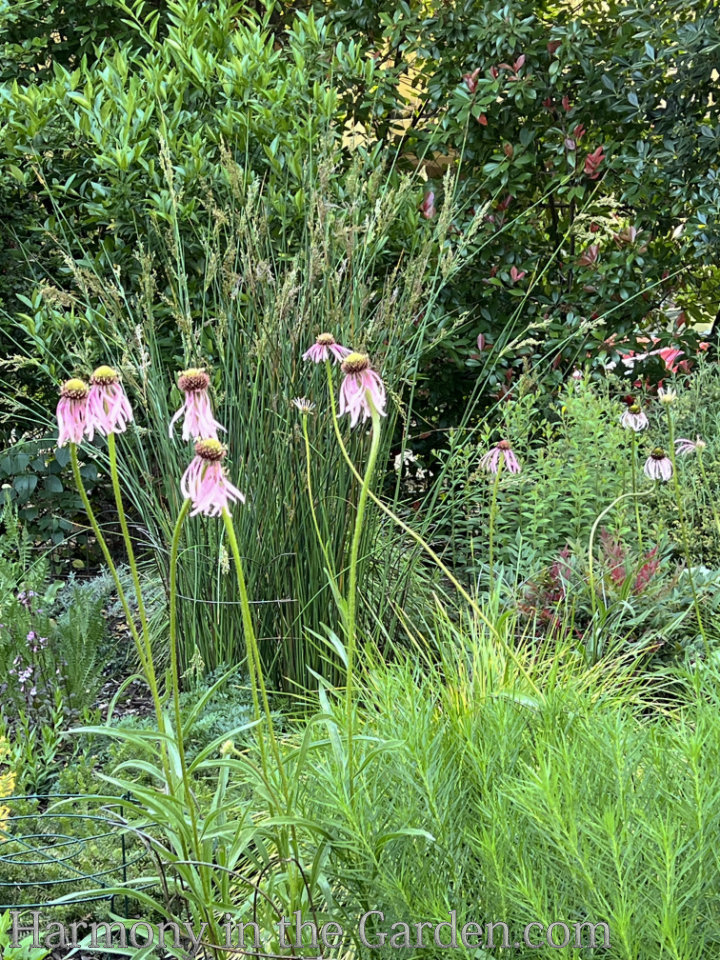
When choosing a plant for its ‘floating’ qualities, one thing to consider is the size of its foliar base. Does it have a small or large footprint in the garden?
Remember – if the goal is to place as many plants in a space as possible without overcrowding one another, a plant with a sizeable foliar base won’t seamlessly ‘blend’ and mingle with its neighbors.
Creating a naturalistic garden is a delicate balance between chaos and control.
I affectionately refer to my style as ‘cramscaping’ or ‘controlled chaos.’ It’s a term that captures the challenge of maintaining a garden that appears wild and untamed yet is carefully designed and curated.
As my design hero, Piet Oudolf, once said,‘ I try to create nature as you would wish to see it.’

One of the challenges in a naturalistic garden is that plants often deviate from their expected growth patterns, growing larger (or smaller) than indicated on their plant tags.
This can lead to a variety of issues, including overshadowing their neighbors.
In my garden, my goal is to have the plants KISS, not TACKLE!
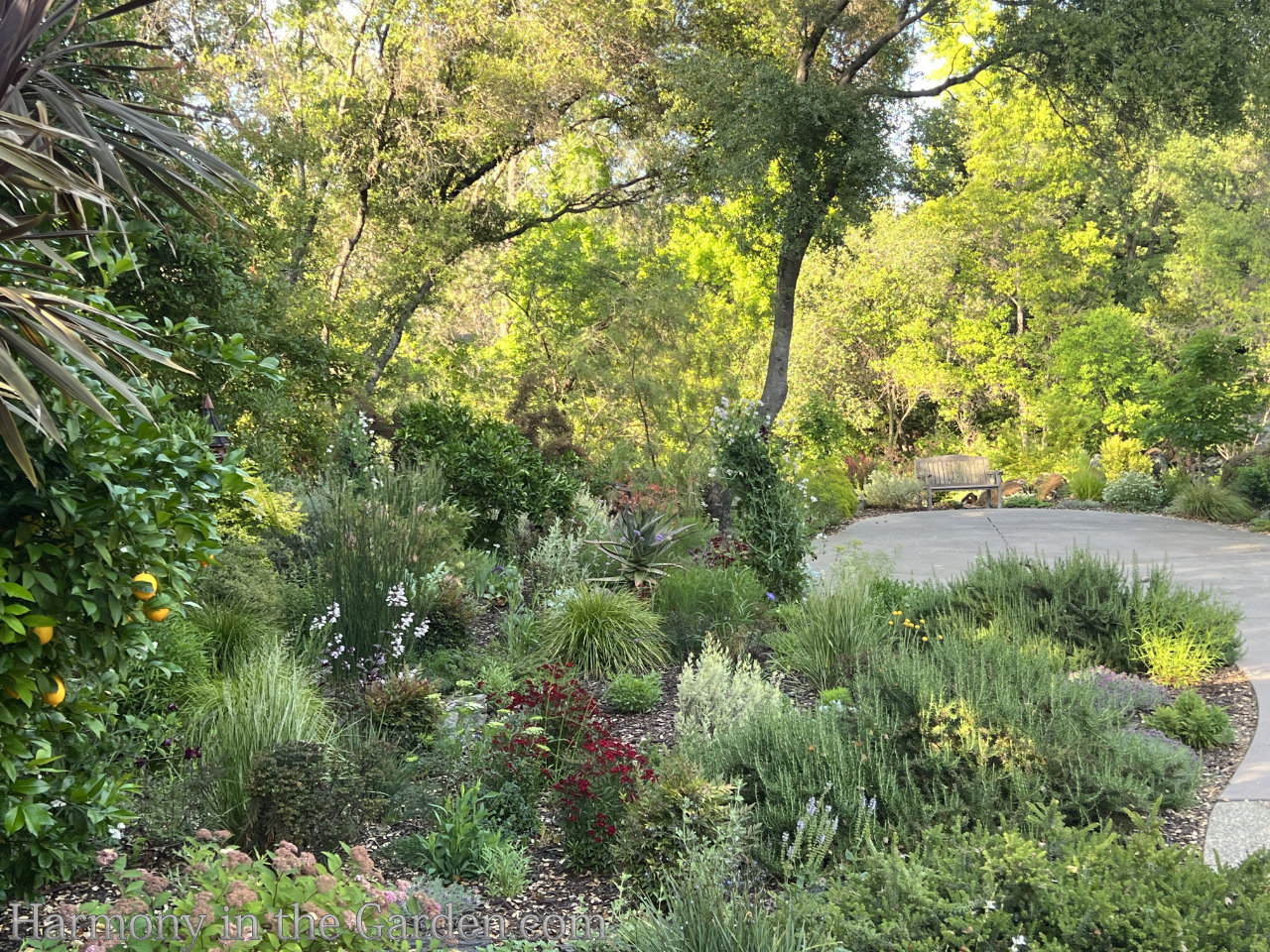
Below are some of my favorite floating and bobbing flowers that add an element of ‘lightness’ to my garden’s naturalistic style.
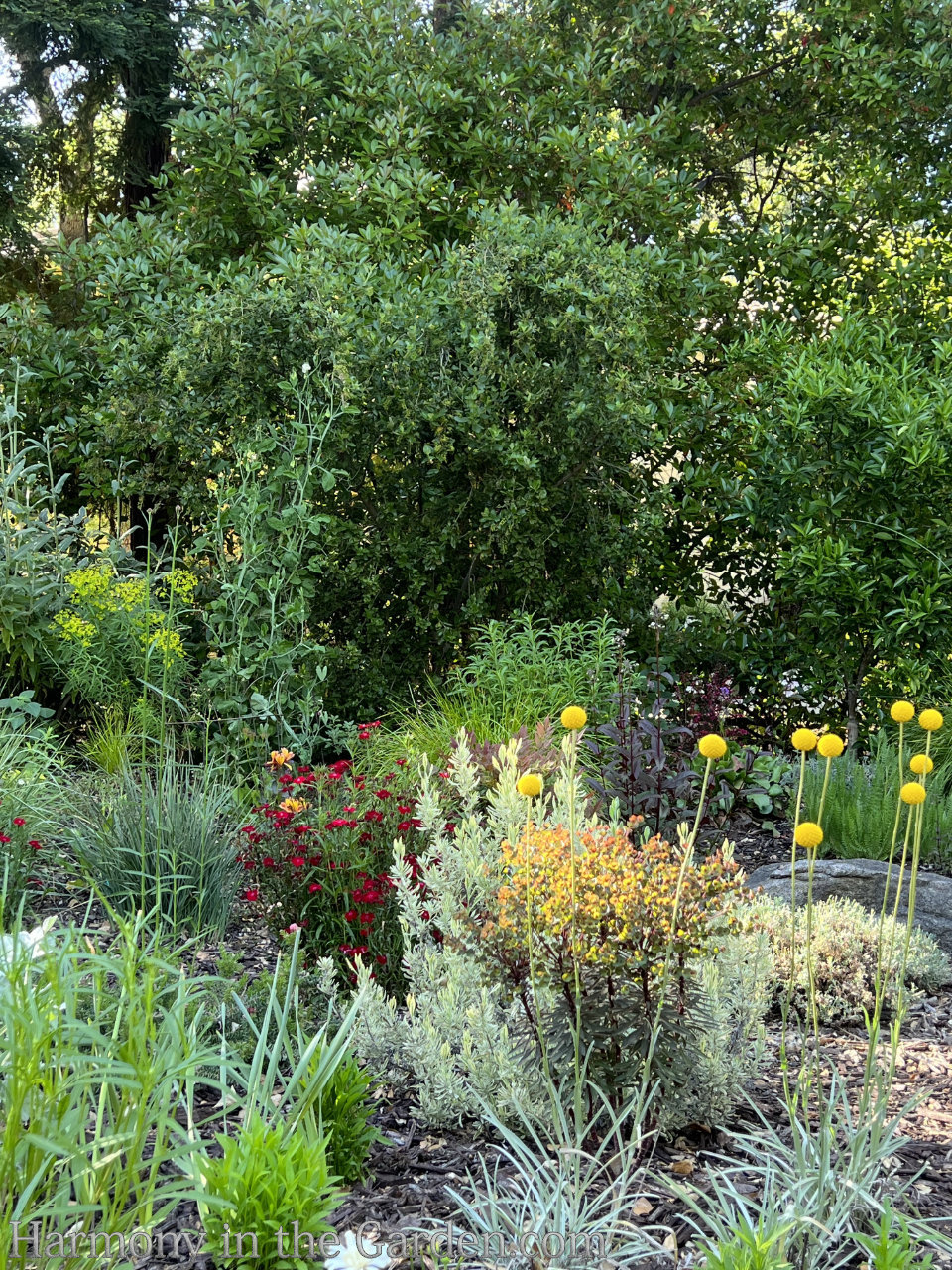
Craspedia globosa (Billy Buttons)
Perennial in warm climates, low-water
USDA Zones 3-10
Deer-resistant
I’m such a huge fan of craspedia, that this year I’m growing more from seed (which is super easy to do) to create a huge swath of little yellow balls that bounce through my modified meadow. (click here to read why I say ‘modified.)
The flowers not only lead the eye through the garden, but because the plant has a small foliar footprint, I can tightly pack them in with their neighbors, creating that full naturalistic look with the floating balls, adding a little height (and interest) to the grouping.
These cheery yellow balls last for months in the garden, drying in place. They also make superb cut and dried flowers.
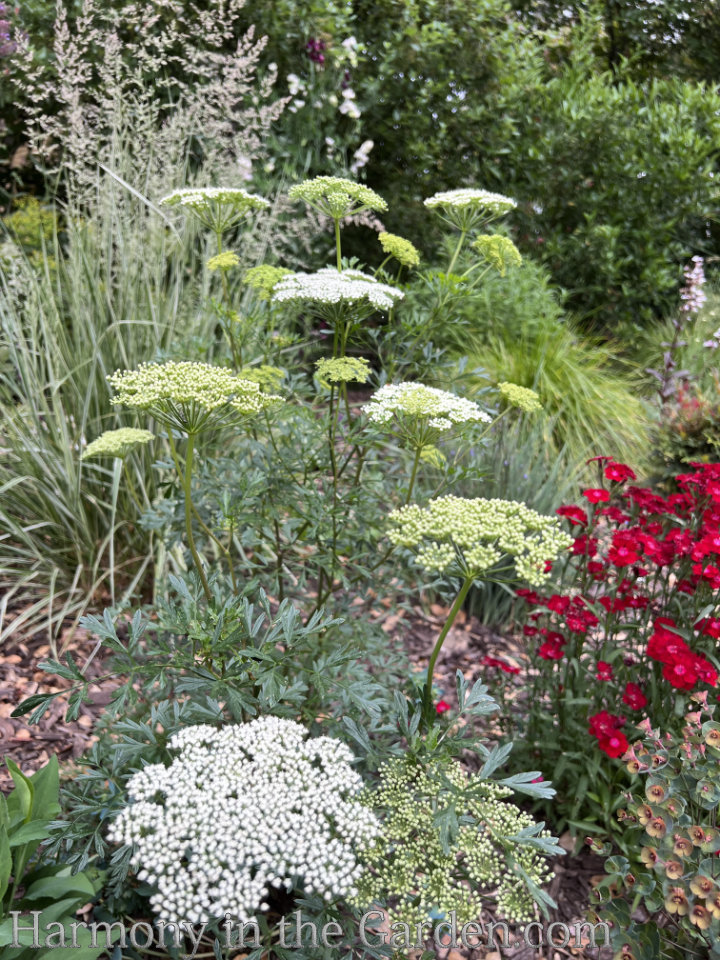
Cenolophium denudatum (Baltic Parsley)
Perennial, Full-Sun, Low-Water
USDA Zones 6a-9b
Deer & Rabbit resistant
Baltic Parsley is another perennial that has done really well in my garden, thriving with wet feet in the winter and dry in the summer.
The oversized, white, umbel-shaped flowers last for months at a time and appear to float above other plants on tall, thin 3-foot stems.
I ordered mine through Annie’s Annuals, and while they took a few years to get established, by the third year, they’re in their full glory.

Echinacea pallida (Native Coneflower)
Perennial, Full-Sun, Low-Water
USDA Zones 3-10
Deer-resistant
This native coneflower is the poster child of prairie planting, and I absolutely adore it.
Despite its delicate appearance, the native coneflower is a tough survivor. Its pale-pink petals gracefully droop from 4-foot stems, adding a touch of elegance to my garden. Its long tap-roots are like its secret weapon, enabling it to thrive even in the harshest conditions of my hot and dry garden.
Similar to the cenolophium, above, it’s another perennial that also does really well with wet feet in the winter and dry feet throughout the rest of the year.
The native coneflower is a gift that keeps on giving. Even in winter, its seed heads, a favorite of finches, remain on the plant, providing a much-needed touch of interest to the garden.

Anemone ‘Honorine Jobert’
Perennial, Part-Shade, Moderate Water
USDA Zones 4-9
Deer-resistant
Starting in late summer, pure white flowers gently sit atop 3-foot-tall stems and are a classic addition to the part-shade garden. Seeing a drift of anemones knitting together a shady garden is truly a sight to behold.
Many consider it a little ‘overly ‘ rambunctious, so it’s best to plant them in an area where they can freely roam or otherwise be kept in check.
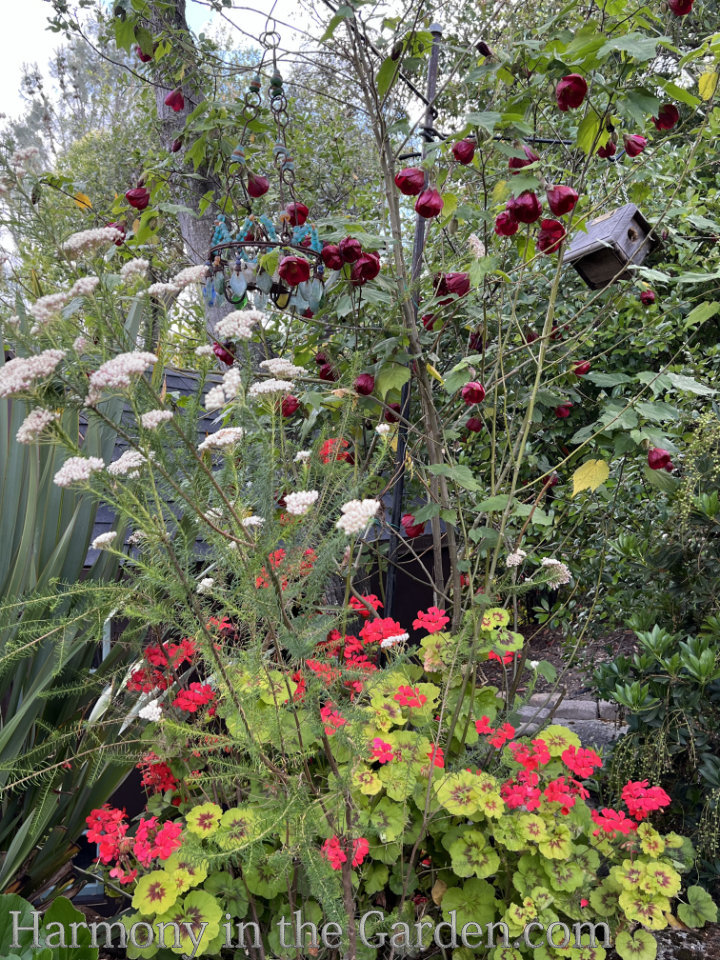
Abutilons (Flowering Maple)
Perennials, part-sun to shade, moderate water
USDA Zones 8-10a
Many abutilon varieties and sizes are available, but a few of my favorites are the dark maroon flowers of ‘Nabob’ and the striped orange flowers of ‘Tiger Eye’.
In the photo, left, you can see the oversized, deep burgundy blooms of ‘Nabob’ winding through the pelargonium ‘Occult Shield’ and neighboring ozothamnus diosmifolius (Rice Flower ‘Pink’).
Planting abutilons among other plants not only looks amazing but is a great strategy to help keep their naturally spindly (and sometimes floppy) stems in place, thanks to the support provided by the neighboring plants.
In the photos below, the smaller variegated orange and red flowers of ‘Tiger’s Eye’ bob above and around nearby plants, creating a magical effect.
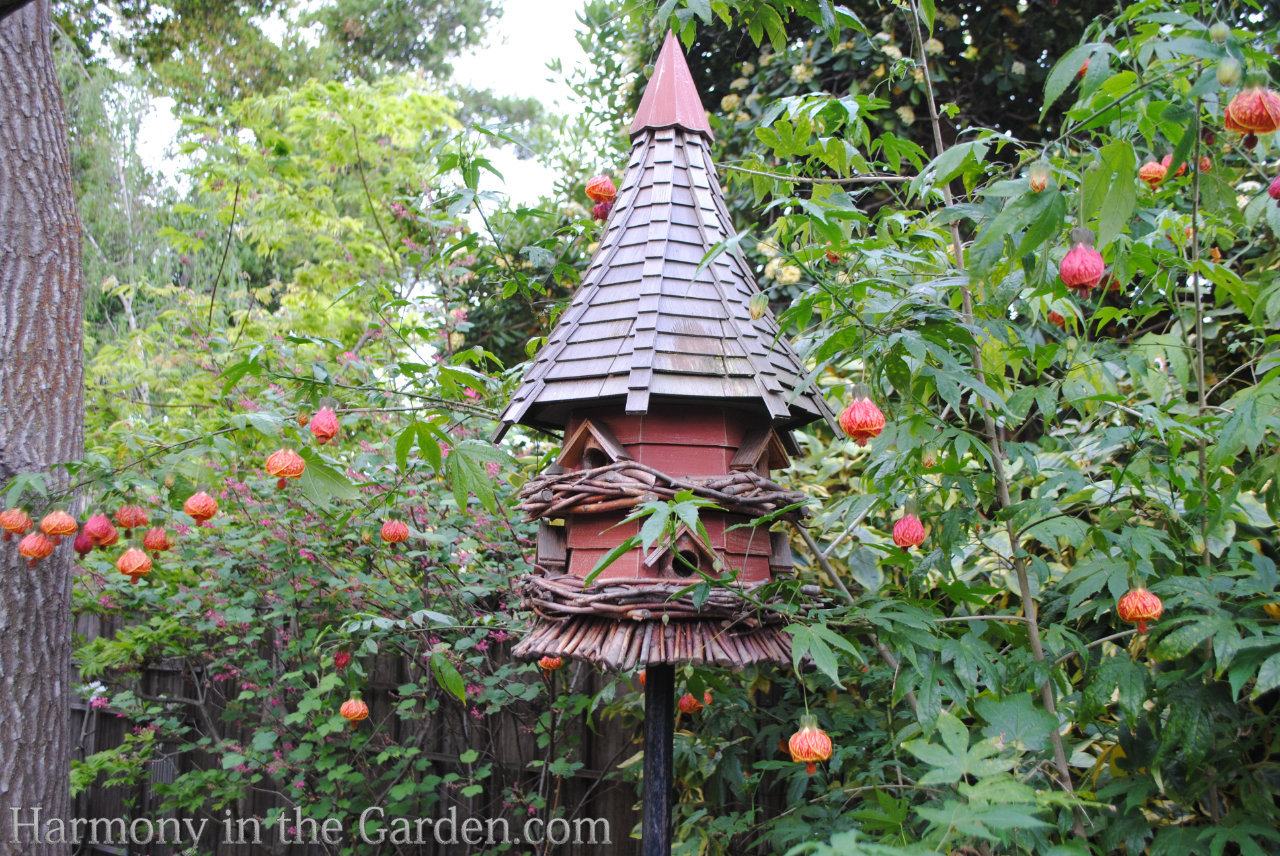
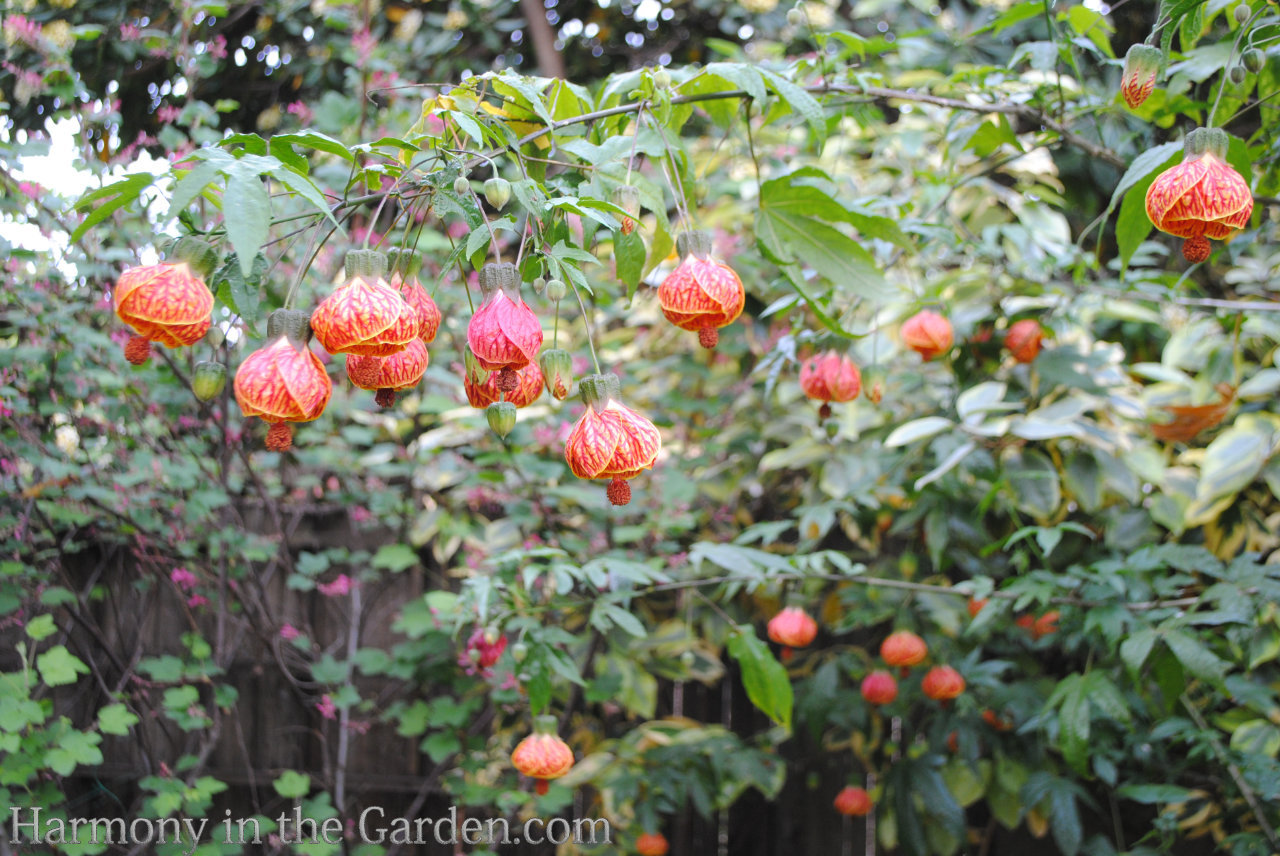
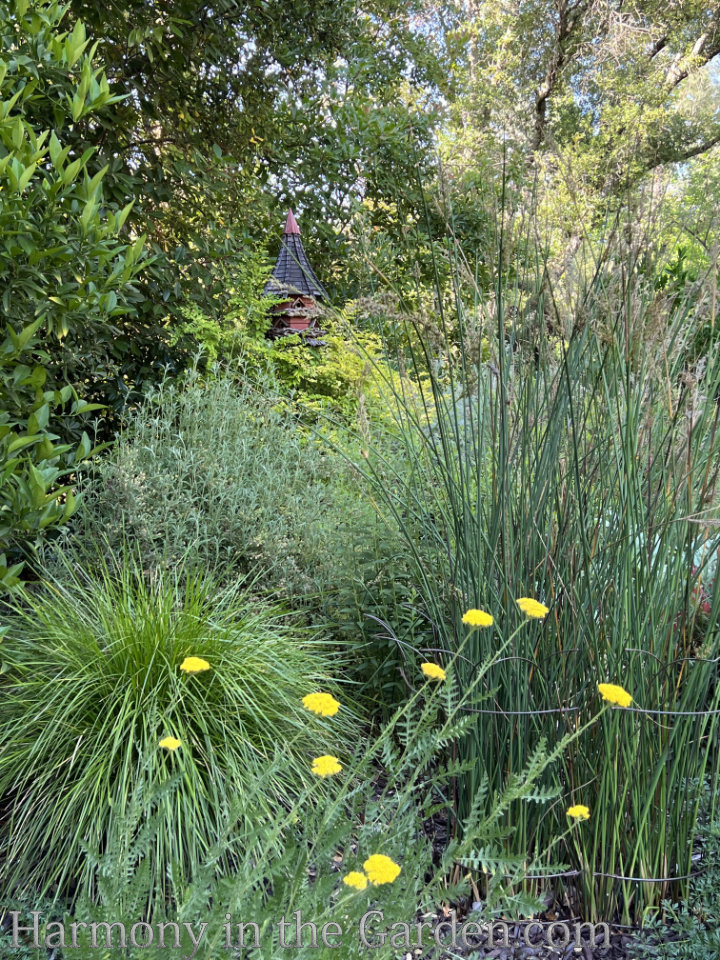
Achillea filipendulina ‘Gold Plate’ (Tall Yarrow)
Full Sun, Low-Water
USDA Zones 3-9
Deer & Rabbit-resistant
Floating on tall, thin stems (up to 3-feet!), this yarrow is different from others in that its fern-like foliage is a lush, dark green color (versus the more common gray foliage).
The oversized mustard-colored flowers are unique, as well. They grow up to 6 inches across and last for months in the garden before fading to a soft tan color.
Like other yarrows, they’ll also attract every butterfly around, making them ideal for a butterfly garden.

Angelica stricta purpurea
Biennial, Full-Sun, Moderate-water
USDA Zones 5-10a
Deer-resistant
Aren’t these gorgeous?
This variety, purchased from Annie’s Annuals, has such unique coloring!
What sets this variety apart is its deep maroon-colored stems that reach an impressive 4 feet in height. These stems are adorned with profuse umbels of dark violet buds, which slowly unfurl to reveal a captivating shade of mauve.
In my garden, it’s been a journey for this variety to establish itself, but now it’s thriving and showing its true beauty.
It’s a sight to behold as it gracefully weaves through a shorter grass (like my calamagrostis foliosa), creating a stunning contrast with its dark stems against the grass’s tawny inflorescence.
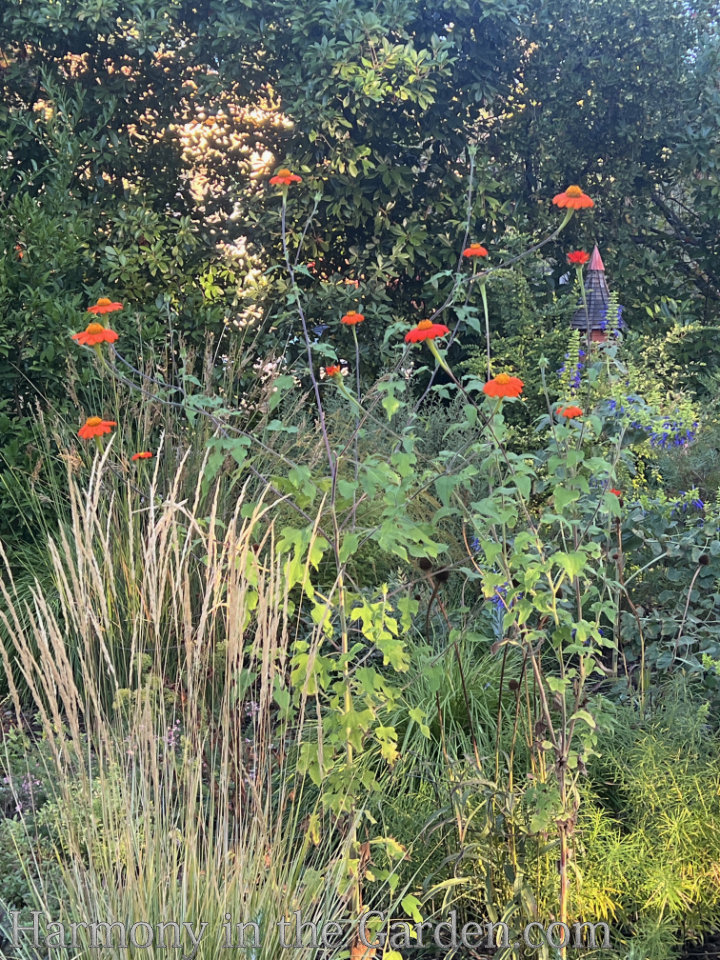
Tithonia rotundifolia ‘Goldfinger’ (Mexican Sunflower)
Annual, Full- Sun, Moderate Water
USDA Zones 8-11
Deer-Resistant
This is quite a tall and fast-growing annual, reaching its peak glory in late summer. It quickly grows to 48” or more, with an open, spaced-out branching habit.
The open quality of the branches allows other plants to grow through and around the open spaces, creating a packed-in, full effect with bright orange flowers bobbing above the garden.
And the monarch butterflies that adore these flowers are an added bonus!
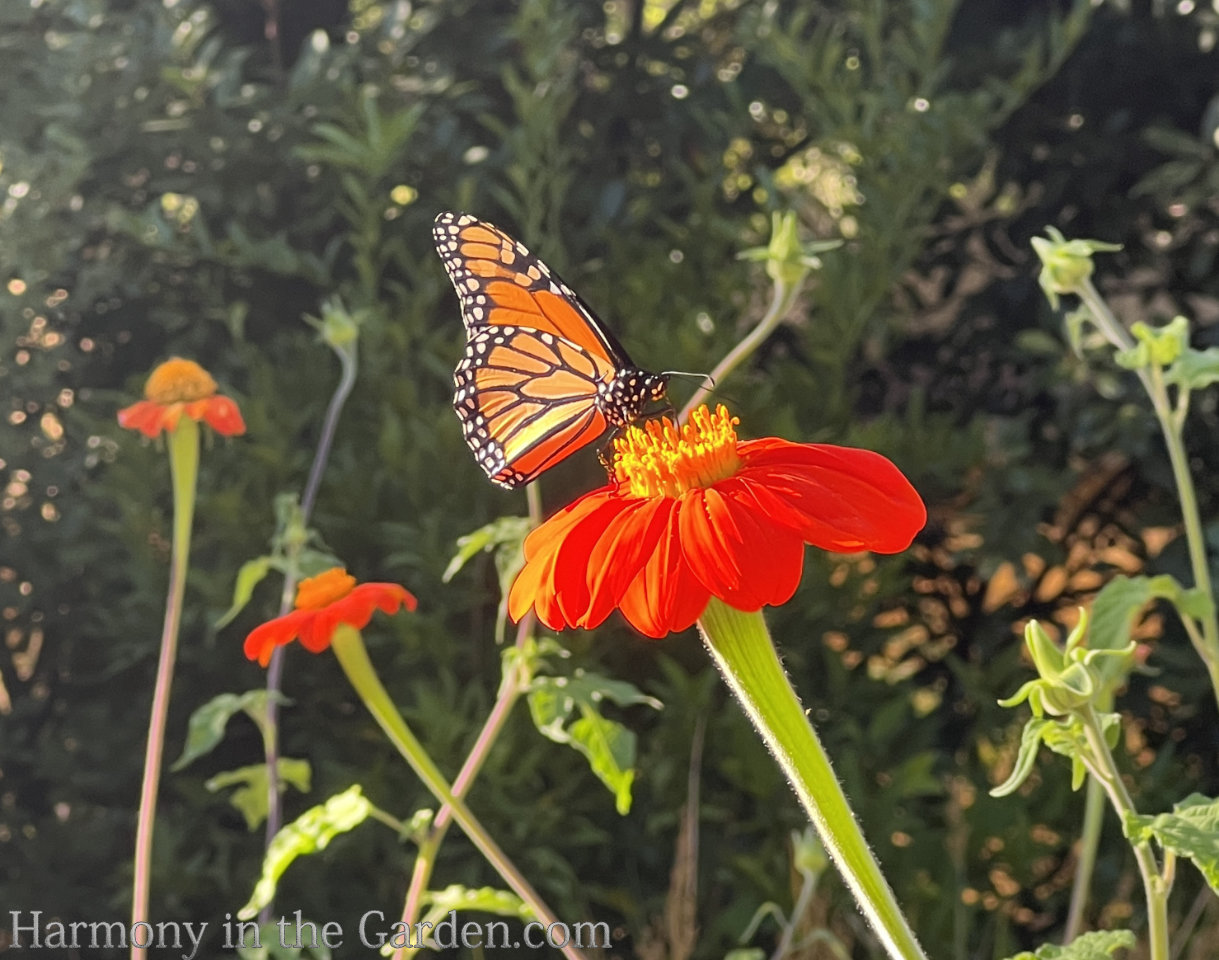
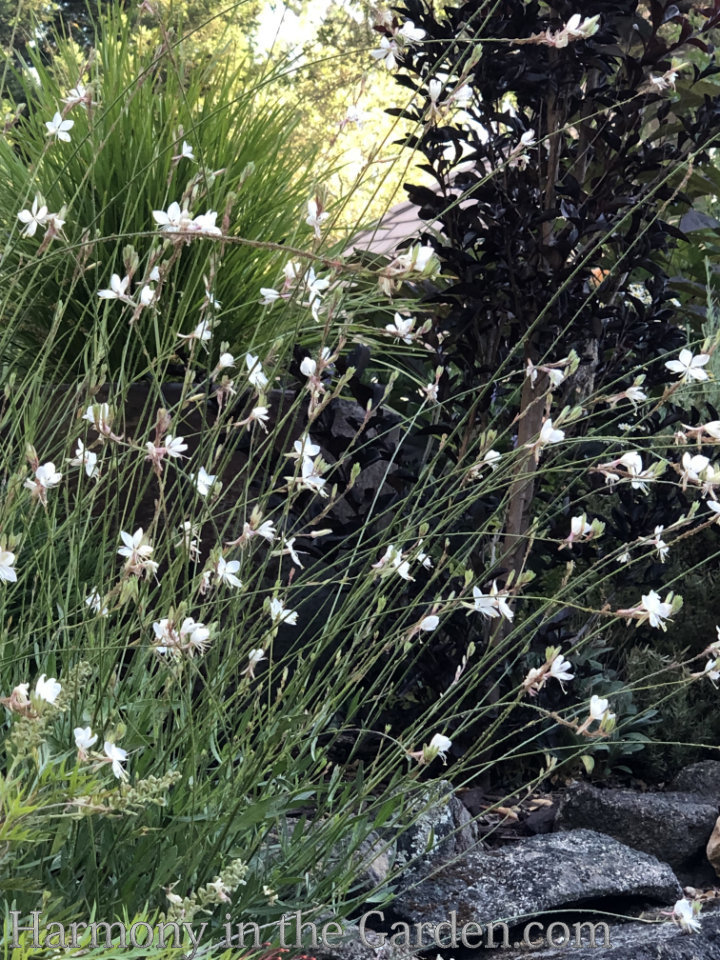
Guara lindheimeri (Whirling Butterflies)
Perennial, Full-Sun, Low-Water
USDA Zones 5-9
Deer-Resistant
Whirling Butterflies generally form a 2-3′ wide clump, which isn’t necessarily considered a small foliar footprint.
However, the sheer amount of airy white flowers fluttering atop 3-foot stems earns it a spot on this list.
The flowers gracefully wave with the slightest wind and resemble whirling butterflies, making them a guaranteed favorite among children.

Trachelium caeruleum ‘Hamer Pandora’ (Blue Lace Flower)
Perennial, Full-Sun, Moderate Water
USDA Zones 7-10
I don’t know how these deep purple fluffy flowers remain atop these 3-4 foot stems without flopping, but they do!
Growing to 5 inches across, these wonderfully nectar-rich flowers make quite a statement when floating above the middle layer in your garden.
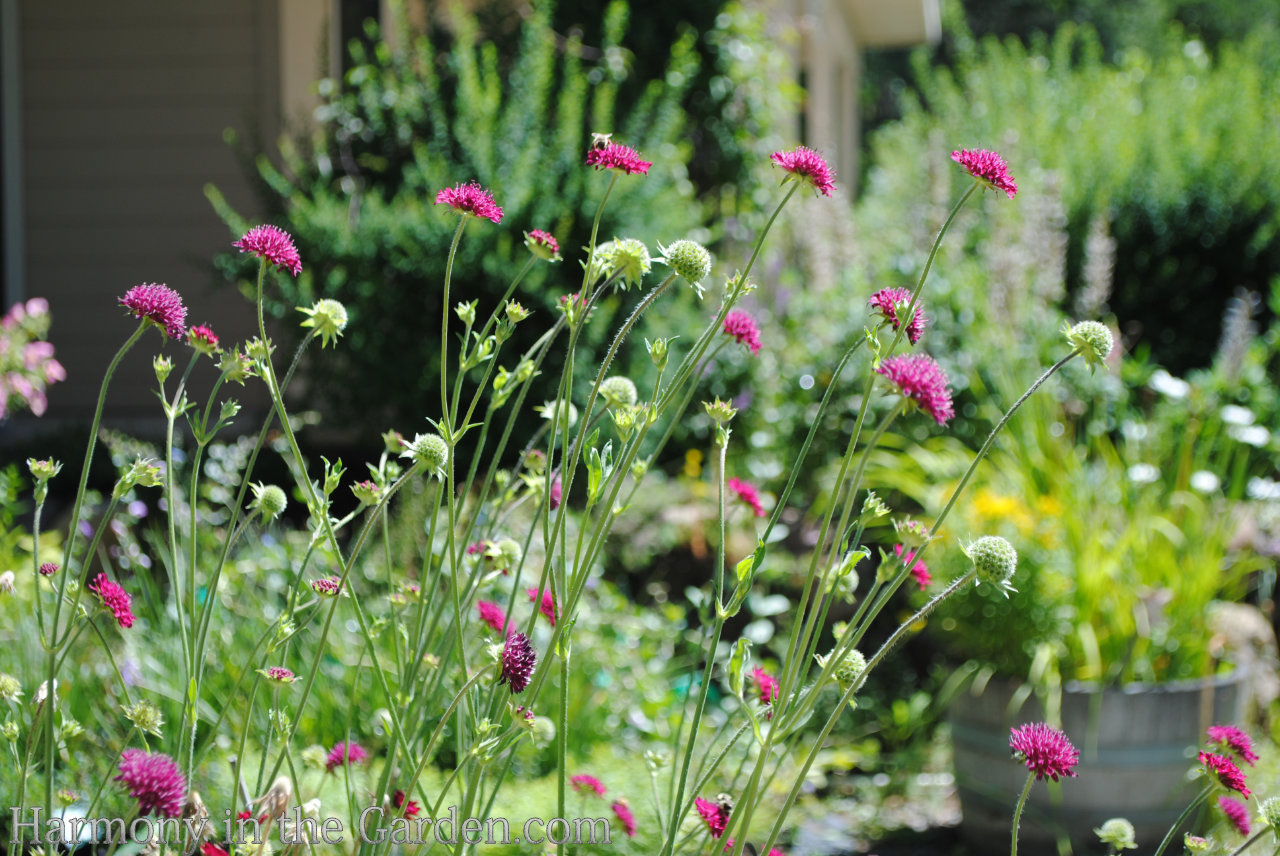
Knautia macedonia (Pincushion)
Perennial, Full-Sun, Moderate-Water
USDA Zones 5-9
Slender 2 ½-foot stems of this perennial are topped with clouds of 1-inch, deep crimson blooms.
Butterflies adore this flower (alas, so do the deer.)

Aquilegia formosa (Western Columbine)
Perennial, Part-Shade, Moderate to Low-Water
USDA Zones 3-8
Deer-Resistant
Columbines will always remind me of my childhood and easily top my Top 10 favorite flowers of all time.
I love all varieties and all colors, with the native Western Columbine holding a special place in my heart.
With a small foliar footprint, this variety grows to 3 feet high and is topped with profuse red and yellow flowers that gently dangle from long, slender stems.
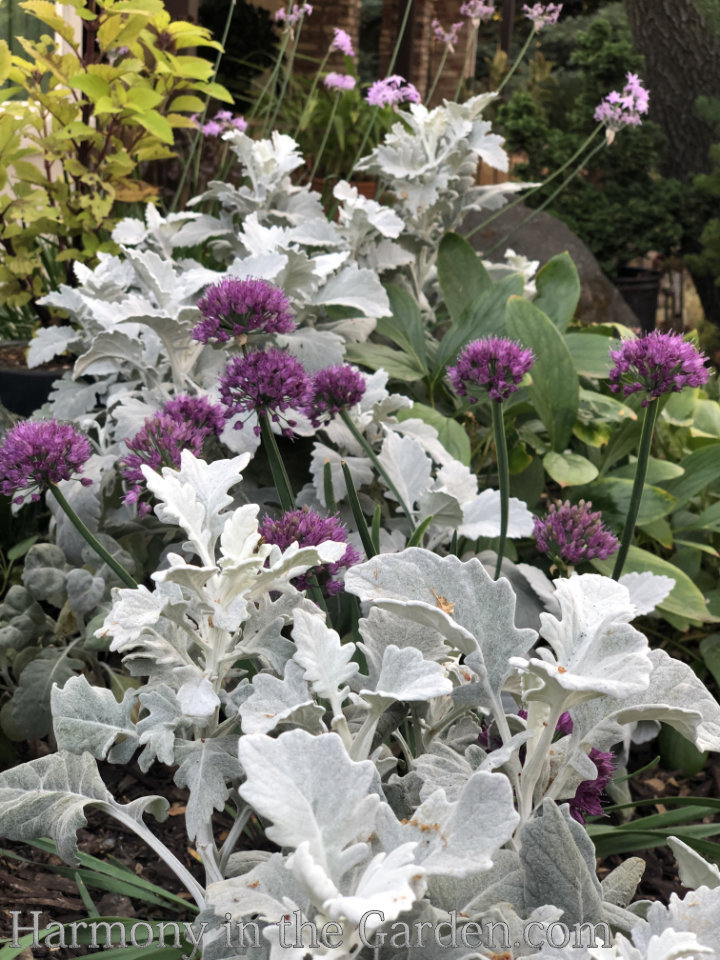
Allium ‘Lavender Bubbles’
Perennial, Full-Sun
USDA Zones 4-9
Deer-Resistant
As you may know, there are many allium varieties, but ‘Lavender Bubbles’ not only blooms later than many others but also has a much smaller foliar footprint (allowing it to easily co-mingle with other plants).
From late June through the end of July, 2-inch purple balls float on 2-foot stems, happily bobbing above the silver foliage of the senecio ‘Silver Gleam.’
I have SO many more light and airy flowers to share with you, so here are a few more that make my ‘Honorable Mentions’ list.
And please share with us some of your favorites! If you’re a fan of the naturalistic style, what do you plant to weave through others in your garden?
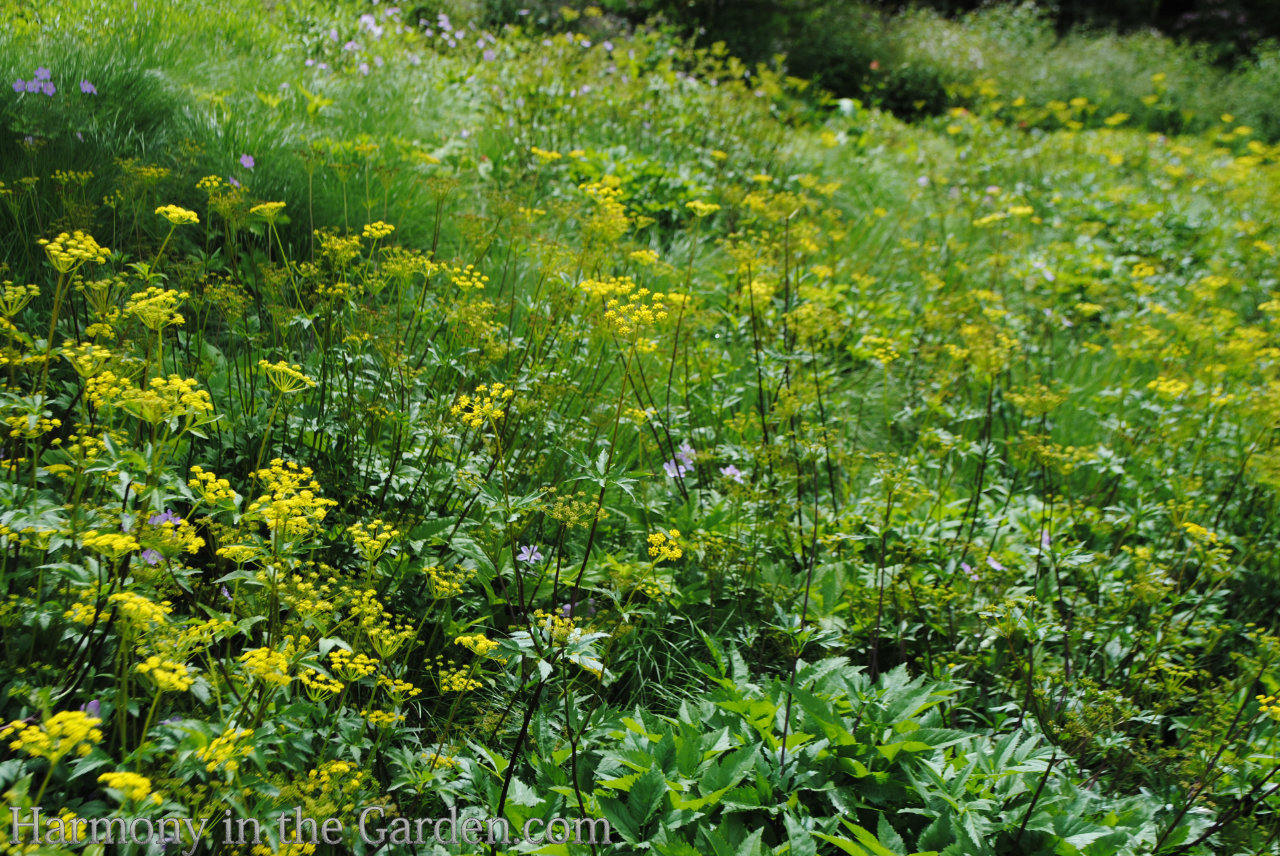
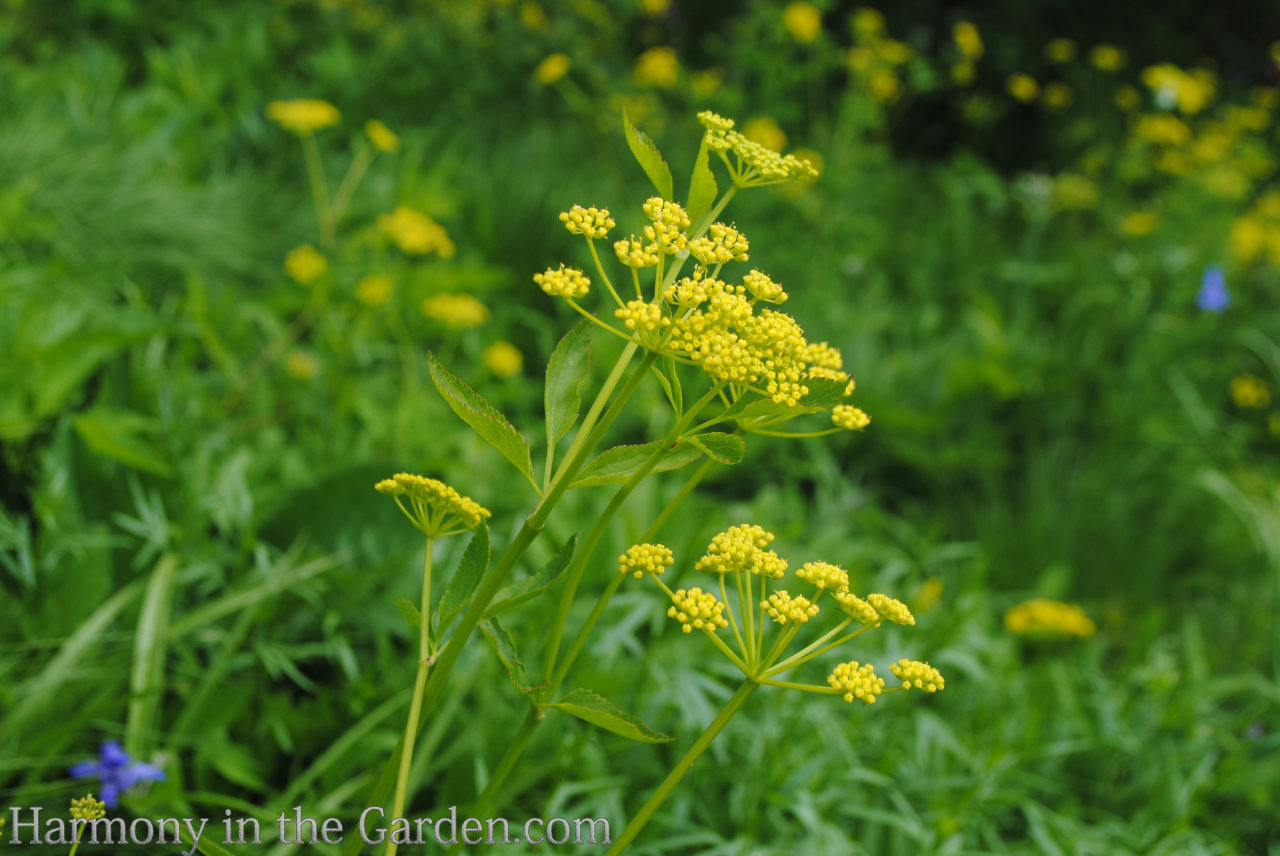
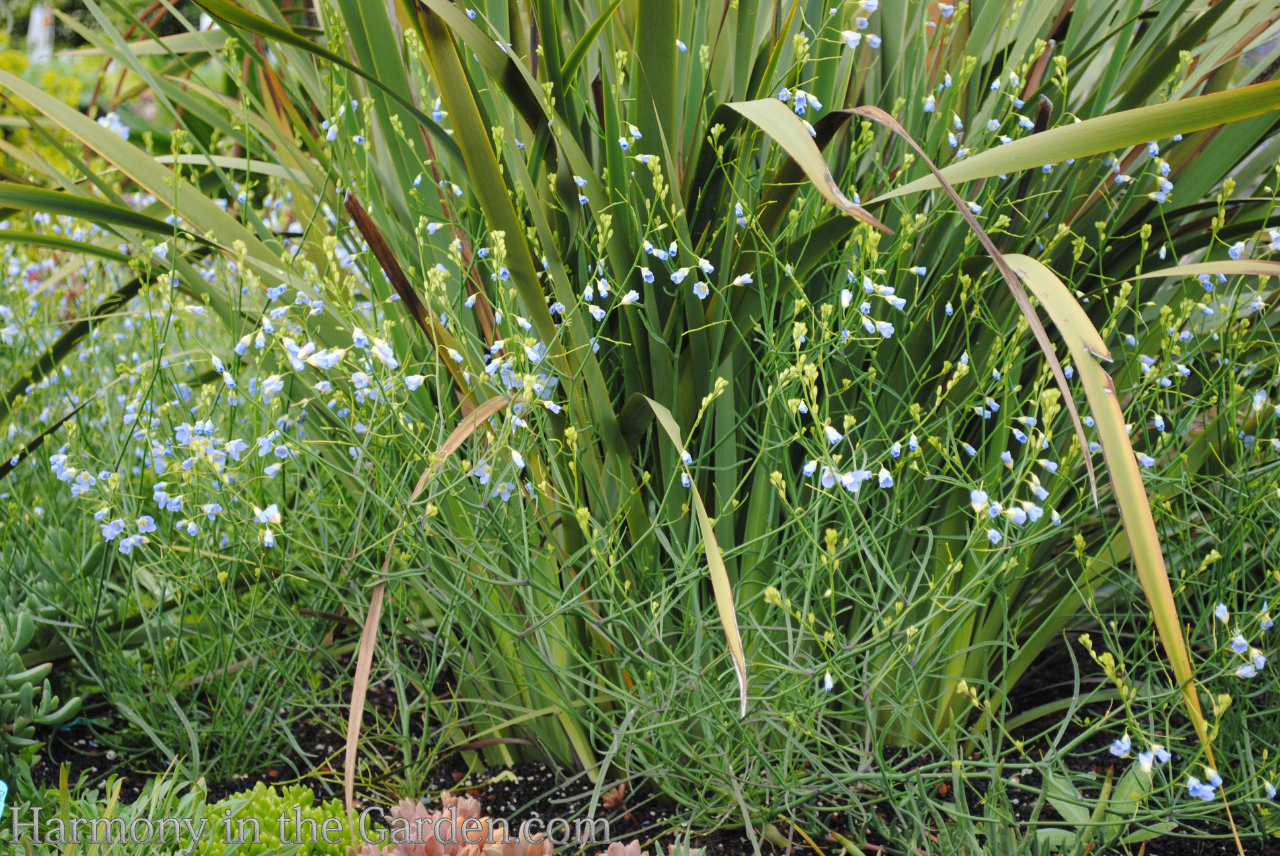
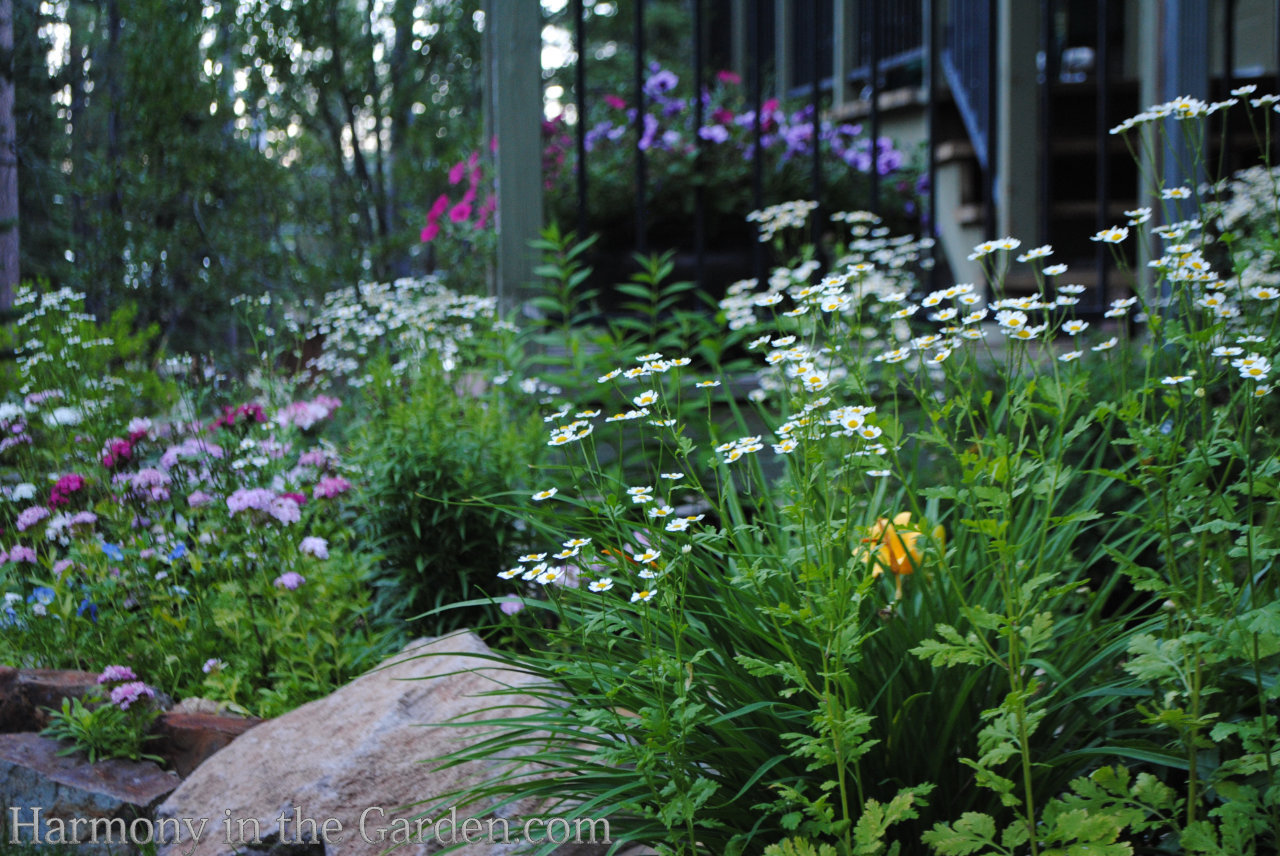
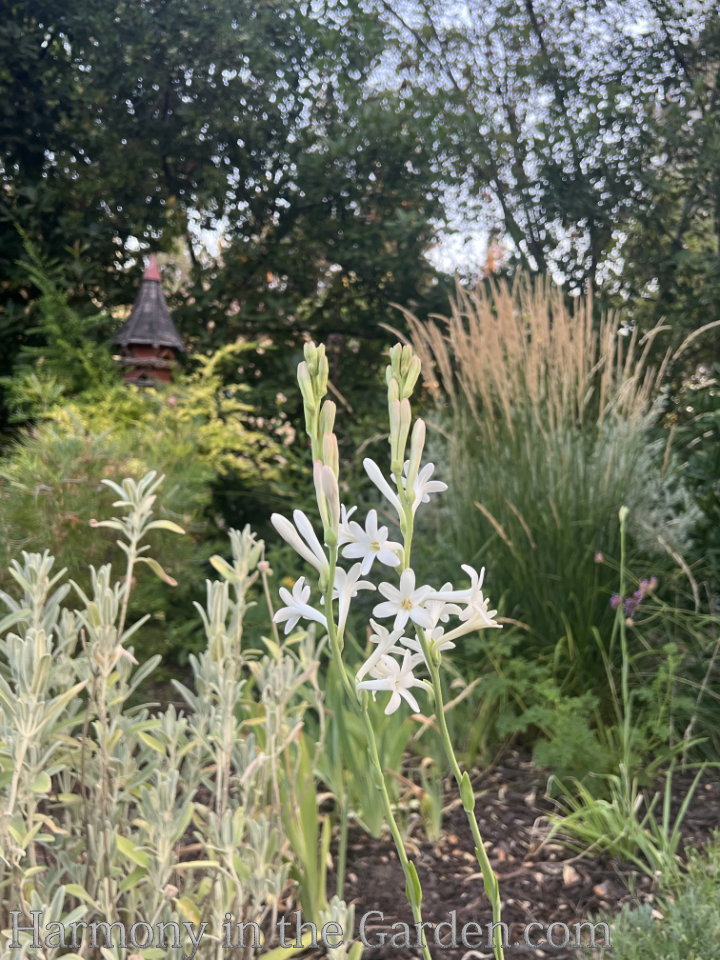
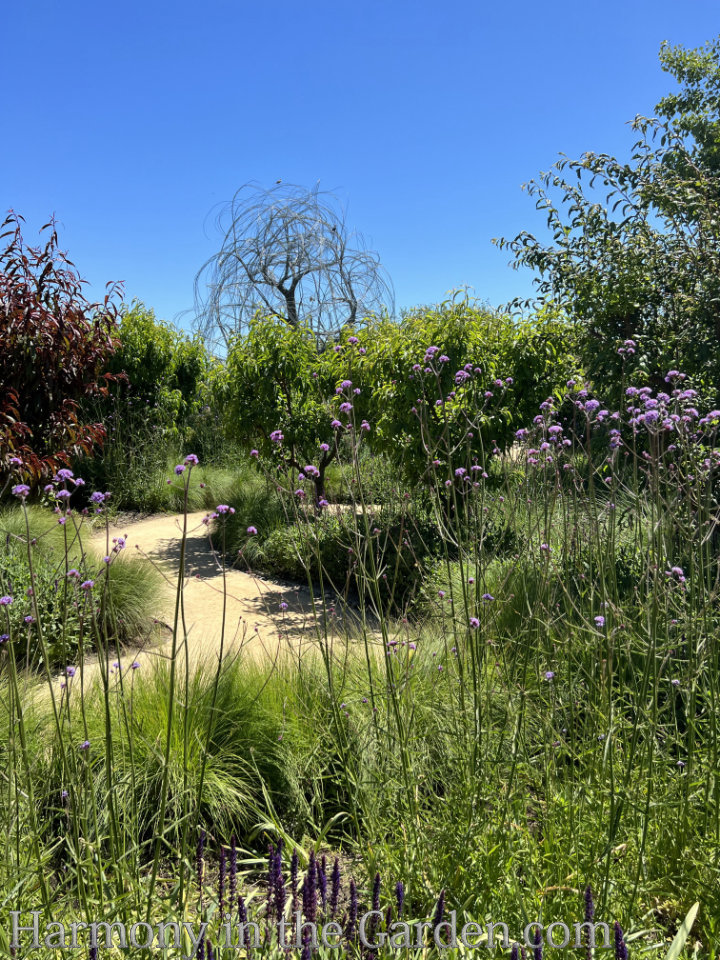
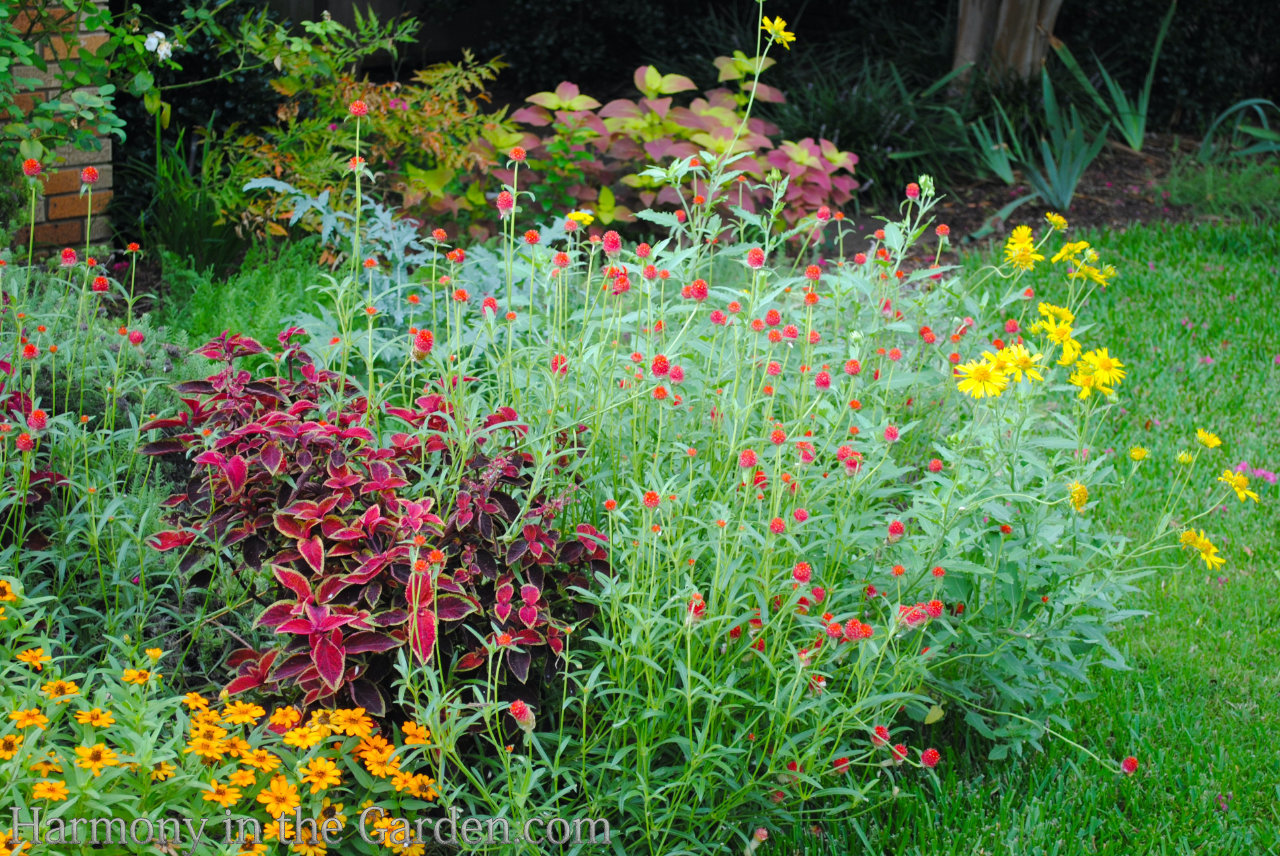
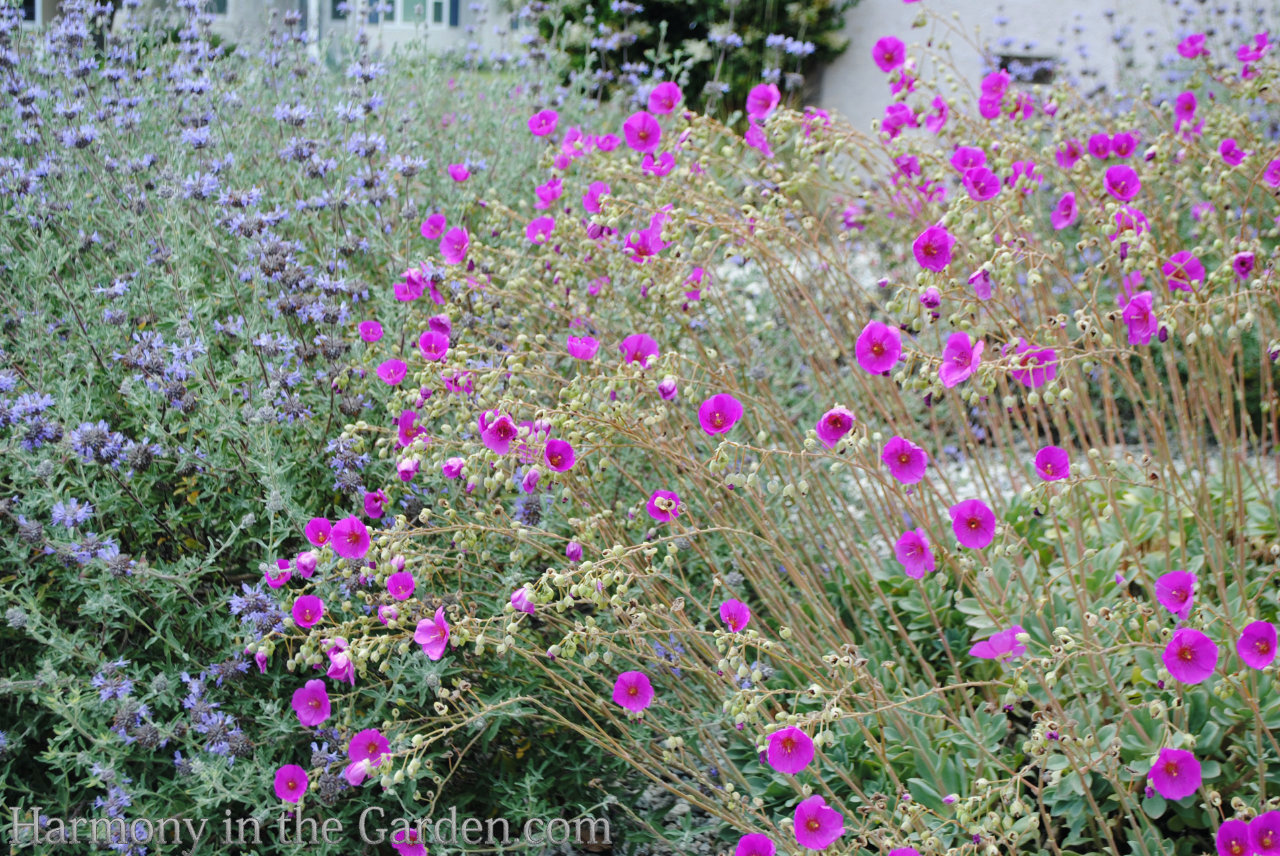
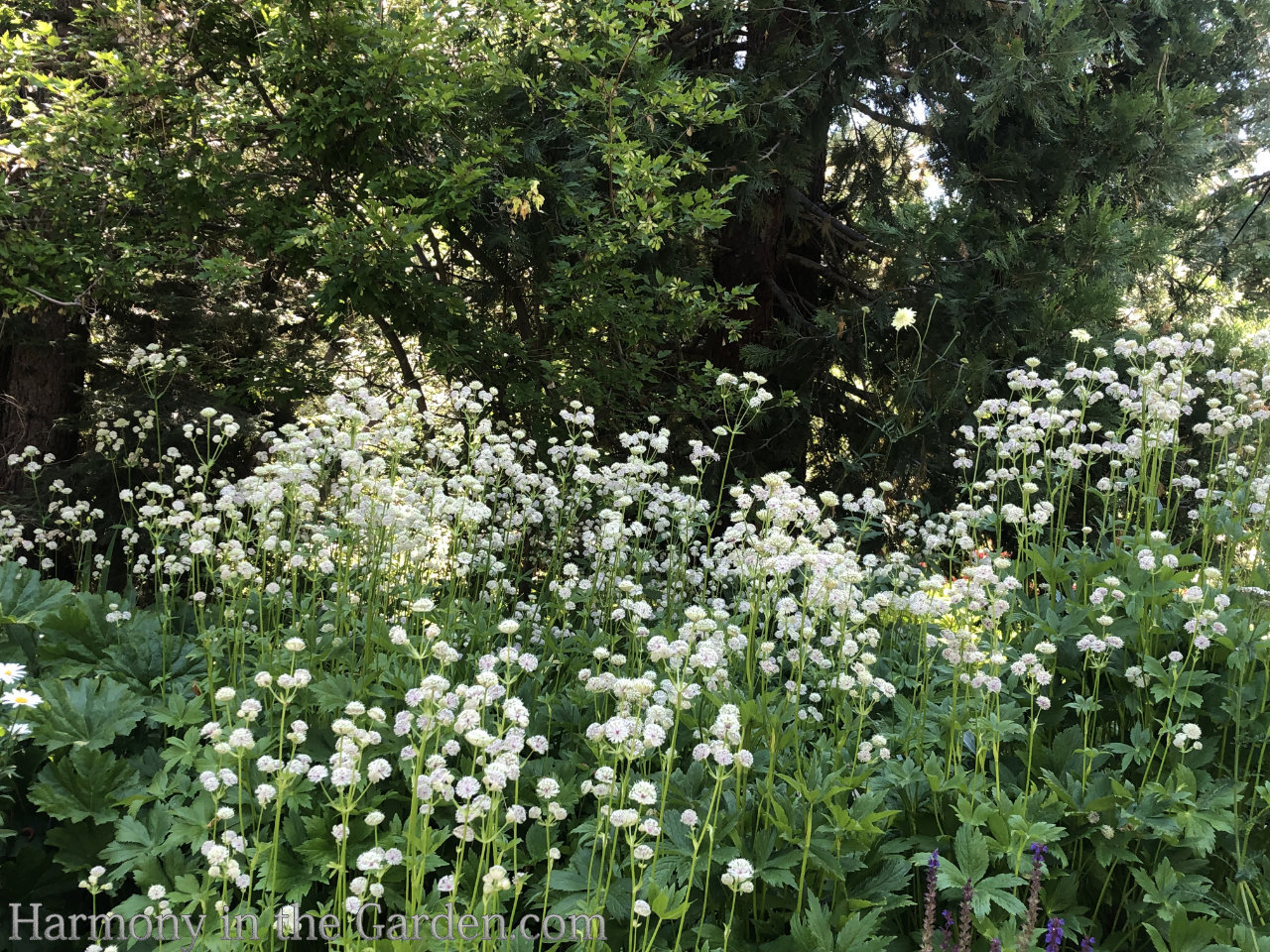
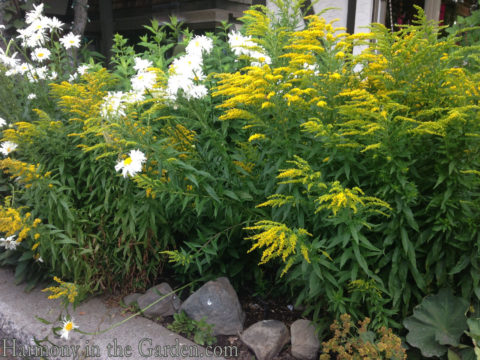
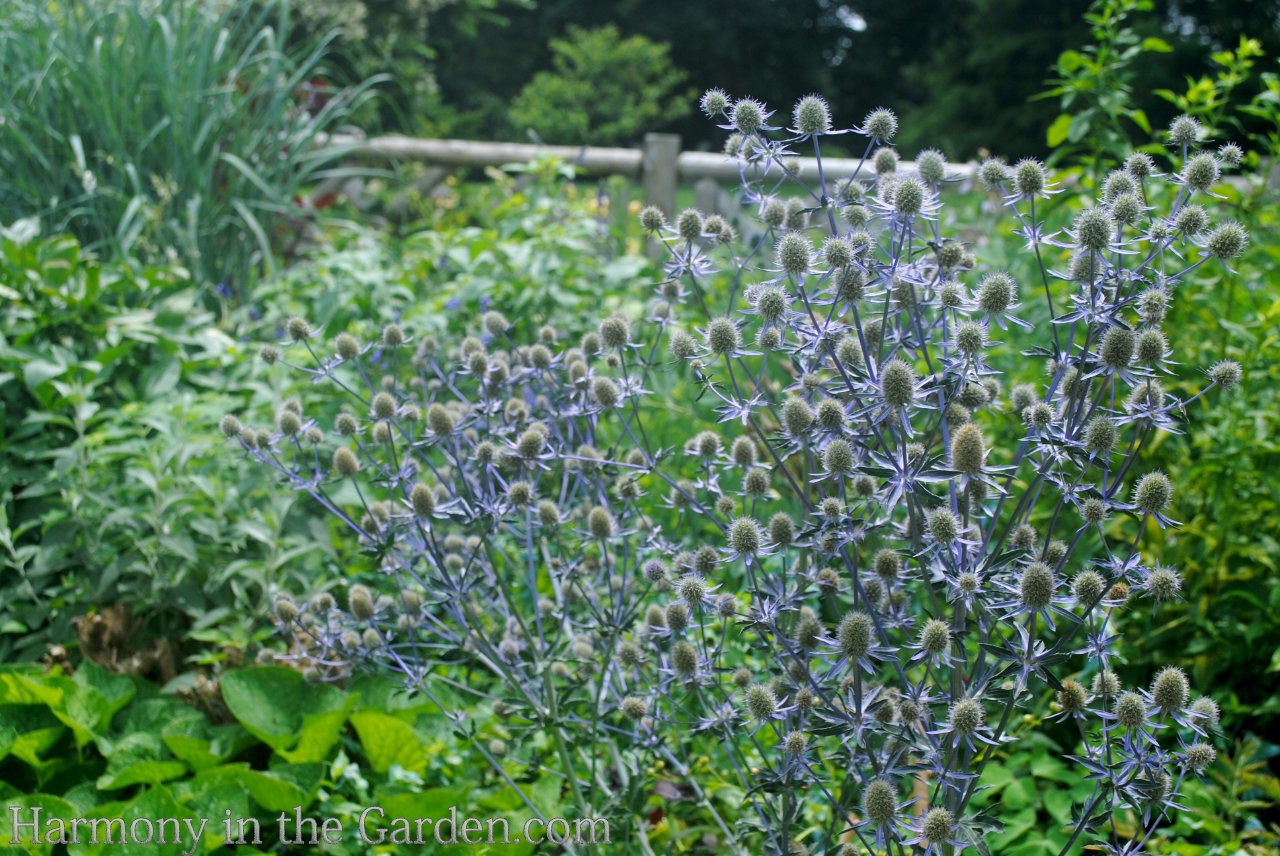







13 Comments
I grow golden alexanders. They’re pretty and they’re tough as nails, but they self-seed like crazy.
Hi Lori – Thanks for the info on those cute little golden alexanders! I wish I could grow them but I’m afraid it’s just too hot here (I’m in zone 9, with very little water, too) As I recall, I took that photo at the NYBG.
Hi! I recently joined your “When and How to Break the Garden Rules” zoom. Great talk!
I thought of a couple of questions I wish I had asked. If you have time, could you let me know:
1. How do you water your own garden, given all the plant moves you make?
2. What do you think of gopher baskets?
Thank you!
Hi Patty, I’m so glad you enjoyed my talk! I use individual emitters to irrigate my plants and because after 7 years of intense planting, I have the general area pretty much configured re: the tubing, emitters, etc. So when I move my plants I try and use the ‘one in, one out’ philosophy so I don’t have to constantly be adding or plugging drippers. Truth be told, though, I’m only about 75% effective with this strategy so I DO, in fact, add more emitters as needed while plugging those that are no longer necessary. Tedious to be sure, but it allows me the ultimate control over how much watering I’m doing, not wasting any at all, and getting water directly to the source vs. overhead spraying a general area. Re: gopher baskets – we’ve had mixed results with them over the years of installing them for my clients. They’re definitely expensive (especially when doing large projects that might need hundreds of plants and the crew I used used to try and make them by hand to save money (which didn’t, really, when you calculate the time needed to make them!) They’re great for perennials/annuals but the shrubs tend to have roots that become entangled in the wire as they mature. However, there’s no perfect answer when it comes to those destructive gophers, so we use them when we absolutely have to.
Rebecca
I want to register for your web presentation, but don’t have Pay Pal. Can’t a person just use a regular credit card?
Thank you.
Hi Judith, yes you can – just follow the registration link and even though it says PayPal, it still allows you to use your credit card ‘as a guest’ vs. having to sign up with PayPal. I’ll DM you more directions on how to do this.
Hey Rebecca! Excellent post! I especially love the combination of flowers in the very first photo but I can’t quite make out what each flower type is. What do you have growing there?
“Cramscaping”. Love it!
My favorite “bobber” is Purple Giant Hyssop (Agastache scrophulariifolia). It is native here in Minnesota. I can’t say that it necessarily has a smaller foliar footprint but it reaches 6 feet tall so the upper stems and flower spikes stand out over the top of everything around it. You don’t need a lot to make a big impact. I love watching it bob and sway in the slightest breeze and pollinators simply adore it. I also have the Pale Purple Coneflower. I love that one too!
Hi Gayle, I’m so glad you enjoyed this post! The first photo was taken in the NY Conservatory Garden and I think the flowers are Ageratum (the fluffy light blue one, also called Floss Flowers), the tallest pink flowers on the left look like a phlox (or possible a cleome), and the darker purple ones on the lower left are an angelonia (maybe the ‘dark blue’ variety.) I haven’t tried the Purple Giant Hyssop but it sounds absolutely gorgeous. My favorites are those tall, towering beauties and yours sounds like it’s something I must find!! Thanks for leaving a comment!
Good morning Rebecca, I agree whole heartedly with Sabrina. What fabulous springtime flower photos! They are a treat for us low desert dwellers!!! Enjoy Spring in your beautiful garden.
Thank you, Sheila (and nice to hear from you!) Hope you’re doing well & happy spring!
Hello Rebecca! Thank you for the great photos! Some of my favorites are in your groupings. Yes, Spring coming soon and our gardens are showing that as well.
Hi Sabrina, and thank you. I can only imagine the changes you’re seeing in your glorious garden each day. Three cheers for spring! 🙂